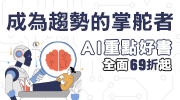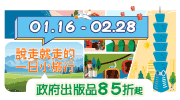Dockland, Smokestacks and Slums: In the Shadows of British Industry
商品資訊
ISBN13:9781857945928
出版社:SILVER LINK PUB
作者:Cedric Greenwood
出版日:2023/04/24
裝訂:精裝
商品簡介
相關商品
商品簡介
Part 1: Industry
This book is a photographic study of the 19th and early 20th century British industrial scene when it recovered in the 20 years after World War 2, only to die away altogether in the mid-1980s. Extended captions describe each picture and the introductory texts to each section include some of my contemporary, personal and rather purple descriptions of some of the best, or worst (whichever your viewpoint) of the old industrial scenes in the period 1950-65, when Britain still led the world in engineering, shipbuilding, merchant fleet, commerce, exports, prestige and in almost every other respect. That was the end of an era of pre-eminence. Apparently, all went to waste because thrifty industrialists were reluctant to modernize and adapt in the face of rising foreign competition and there were two decades of industrial strife and short working weeks in the 1970s and '80s for higher wages than could be justified by the competition. The strikes delayed delivery dates on orders and gave British industry a reputation for being slow as well as expensive. Now one of Britain's main exports is scrap metal to foreign steelworks - and we buy foreign steel! This book is also a lament for that lost industrial Britain and probably the only book to extol the aesthetic potential and interesting contribution those industrial elements made to our townscapes. Much of the late-Victorian industrial architecture was a credit to our townscapes. Most of what we see in these pictures in Parts 1 to 4 has disappeared almost without trace, except for archaeology, and the scenes have changed beyond recognition as if those industries had never been there. Thus new generations of residents have no idea of what their home towns produced for us. In some cases we say: 'Good riddance to the dark, satanic mills' but in other cases we are sorry for the loss in terms of employment and the contribution to the economy and the character of the built environment.
Part 2: Industrial Railways and Canals
The Industrial Revolution would not have evolved were it not for the canals to carry the materials and goods to where they were needed. Their main cargo was coal, which, combined with the earlier use of iron ore, led to the invention of the stationary steam engine driving machines and, in turn, to the locomotive engine. The horse-drawn railways taking coal to the river and canal wharves were superseded by steam railways, which competed with the canals and in some cases amalgamated with canal companies to their mutual benefit where there were rail-served canal basins and wharves, as in the Black Country. The economy and speed of the railways gradually superseded the canals, which declined during the first half of the 20th century, except for some of the broad canals and canalized river 'navigations' radiating inland from the Humber that still serve industry in Nottinghamshire and Yorkshire. Most of the traffic taken by the canals and the railways is now conveyed by lorries using the public highway instead of their own right of way.
Part 3: Wharves and Warehouses
The photographs in part 3 are almost entirely of the older docks and riverside wharves on the Pool of London and the Mersey docks at Birkenhead and Liverpool. London River was the name used by lightermen, bargemen, tugmen and writers of the industrial era for the reaches of the Thames under the jurisdiction and conservancy of the City of London Corporation, from the London Stone at Staines, Middlesex, to the London Stone off the Isle of Grain in Kent. From the mid-19th century to the mid-20th century 'dockland' was what we called the neighborhood of the docks but in London it was regenerated as The Docklands, which are not docks at all but skyscraper office blocks, luxury flats, marinas and an airport on reclaimed docks, and around empty sheets of water downriver from Millwall to North Woolwich with no ships, no cargoes, no cranes, no stevedores and no porters - in fact, not a very interesting place at all and the social order has changed from the workers to the whizz-kids and the wealthy.
Part 4: Streets and Slums, Introduction
In part 3 we look at the ordinary streets of terraced houses, tenements, taverns, shops, hotels and warehouses in the industrial and dockland areas of our towns and cities in the mid-20th century. I say 'Streets and Slums' advisedly because only some of them were slums either because of disinterested landlords or tenants with bad habits, but most of homes here were kept as well as could be expected by house-proud and hard working people living in or near poverty. Conditions varied but some people had to be hardy and perseverant living with no bathroom, the w.c. in the backyard annex with the coalhouse or a shared w.c. on the next floor in the tenements. These humble homes of the people who did all the essential, hard work in industry were in stark contrast to the stately villas, mansions and castles of the industrialists who founded those industries, which suggests that the profits were very unreasonably distributed.
Part 5: The Acceptable Face of Industry
This section is an antidote, if one were needed, to the foregoing pictures of the steam age industrial scenes, just to show there are more congenial and attractive aspects of industry that we can all appreciate. First we look at the windmills and watermills. In the early industrial period, before the Industrial Revolution driven by coal and steam, all industrial processes were powered by wind and water. Remains of watermills for bread and livestock meal date from the Roman occupation and wind milling of grain is recorded from the 12th century onward. From the 16th century to the 19th century wind and water power was also harnessed to drive cutters, grindstones, hammers, mixers, stamps and other machinery in the manufacture of brass, bricks, cement, fertilizer, ironwork, p
This book is a photographic study of the 19th and early 20th century British industrial scene when it recovered in the 20 years after World War 2, only to die away altogether in the mid-1980s. Extended captions describe each picture and the introductory texts to each section include some of my contemporary, personal and rather purple descriptions of some of the best, or worst (whichever your viewpoint) of the old industrial scenes in the period 1950-65, when Britain still led the world in engineering, shipbuilding, merchant fleet, commerce, exports, prestige and in almost every other respect. That was the end of an era of pre-eminence. Apparently, all went to waste because thrifty industrialists were reluctant to modernize and adapt in the face of rising foreign competition and there were two decades of industrial strife and short working weeks in the 1970s and '80s for higher wages than could be justified by the competition. The strikes delayed delivery dates on orders and gave British industry a reputation for being slow as well as expensive. Now one of Britain's main exports is scrap metal to foreign steelworks - and we buy foreign steel! This book is also a lament for that lost industrial Britain and probably the only book to extol the aesthetic potential and interesting contribution those industrial elements made to our townscapes. Much of the late-Victorian industrial architecture was a credit to our townscapes. Most of what we see in these pictures in Parts 1 to 4 has disappeared almost without trace, except for archaeology, and the scenes have changed beyond recognition as if those industries had never been there. Thus new generations of residents have no idea of what their home towns produced for us. In some cases we say: 'Good riddance to the dark, satanic mills' but in other cases we are sorry for the loss in terms of employment and the contribution to the economy and the character of the built environment.
Part 2: Industrial Railways and Canals
The Industrial Revolution would not have evolved were it not for the canals to carry the materials and goods to where they were needed. Their main cargo was coal, which, combined with the earlier use of iron ore, led to the invention of the stationary steam engine driving machines and, in turn, to the locomotive engine. The horse-drawn railways taking coal to the river and canal wharves were superseded by steam railways, which competed with the canals and in some cases amalgamated with canal companies to their mutual benefit where there were rail-served canal basins and wharves, as in the Black Country. The economy and speed of the railways gradually superseded the canals, which declined during the first half of the 20th century, except for some of the broad canals and canalized river 'navigations' radiating inland from the Humber that still serve industry in Nottinghamshire and Yorkshire. Most of the traffic taken by the canals and the railways is now conveyed by lorries using the public highway instead of their own right of way.
Part 3: Wharves and Warehouses
The photographs in part 3 are almost entirely of the older docks and riverside wharves on the Pool of London and the Mersey docks at Birkenhead and Liverpool. London River was the name used by lightermen, bargemen, tugmen and writers of the industrial era for the reaches of the Thames under the jurisdiction and conservancy of the City of London Corporation, from the London Stone at Staines, Middlesex, to the London Stone off the Isle of Grain in Kent. From the mid-19th century to the mid-20th century 'dockland' was what we called the neighborhood of the docks but in London it was regenerated as The Docklands, which are not docks at all but skyscraper office blocks, luxury flats, marinas and an airport on reclaimed docks, and around empty sheets of water downriver from Millwall to North Woolwich with no ships, no cargoes, no cranes, no stevedores and no porters - in fact, not a very interesting place at all and the social order has changed from the workers to the whizz-kids and the wealthy.
Part 4: Streets and Slums, Introduction
In part 3 we look at the ordinary streets of terraced houses, tenements, taverns, shops, hotels and warehouses in the industrial and dockland areas of our towns and cities in the mid-20th century. I say 'Streets and Slums' advisedly because only some of them were slums either because of disinterested landlords or tenants with bad habits, but most of homes here were kept as well as could be expected by house-proud and hard working people living in or near poverty. Conditions varied but some people had to be hardy and perseverant living with no bathroom, the w.c. in the backyard annex with the coalhouse or a shared w.c. on the next floor in the tenements. These humble homes of the people who did all the essential, hard work in industry were in stark contrast to the stately villas, mansions and castles of the industrialists who founded those industries, which suggests that the profits were very unreasonably distributed.
Part 5: The Acceptable Face of Industry
This section is an antidote, if one were needed, to the foregoing pictures of the steam age industrial scenes, just to show there are more congenial and attractive aspects of industry that we can all appreciate. First we look at the windmills and watermills. In the early industrial period, before the Industrial Revolution driven by coal and steam, all industrial processes were powered by wind and water. Remains of watermills for bread and livestock meal date from the Roman occupation and wind milling of grain is recorded from the 12th century onward. From the 16th century to the 19th century wind and water power was also harnessed to drive cutters, grindstones, hammers, mixers, stamps and other machinery in the manufacture of brass, bricks, cement, fertilizer, ironwork, p
主題書展
更多
主題書展
更多書展今日66折
您曾經瀏覽過的商品
購物須知
外文書商品之書封,為出版社提供之樣本。實際出貨商品,以出版社所提供之現有版本為主。部份書籍,因出版社供應狀況特殊,匯率將依實際狀況做調整。
無庫存之商品,在您完成訂單程序之後,將以空運的方式為你下單調貨。為了縮短等待的時間,建議您將外文書與其他商品分開下單,以獲得最快的取貨速度,平均調貨時間為1~2個月。
為了保護您的權益,「三民網路書店」提供會員七日商品鑑賞期(收到商品為起始日)。
若要辦理退貨,請在商品鑑賞期內寄回,且商品必須是全新狀態與完整包裝(商品、附件、發票、隨貨贈品等)否則恕不接受退貨。
























